Disease Focus - HAE & Bradykinin-Mediated Diseases

People living with HAE want to live a normal life.
Despite the substantial progress made in the past two decades,1 people living with HAE still have significant unmet need.2 They compromise between an effective therapy, its safety, or the ease of administration.3,4,5
Regardless of on-demand treatment or attack prevention, patients still experience stress, depression, and anxiety around their next attack.6 The burden of painful injections and the need for multiple doses to provide symptom relief can result in up to approximately 40% of HAE attacks not being completely resolved after a first dose of treatment.7
Hereditary Angioedema
Hereditary angioedema (HAE) is a rare and potentially life-threatening genetic disease that occurs in approximately 1 in 10,000 to 1 in 50,000 people, according to HAEi.

RARE
1 IN 10,000 – 50,000*
- USA 7,000-15,000* people
- EU 9,000-15,000* people
- Japan 2,500-4,500* people

GENETIC
ENZYME DEFICIENCY
Decreased production or production of functionally impaired C1 esterase inhibitor (C1-INH)

HEREDITARY
INHERITED
Generally passed on from parents to children
Acquired Angioedema due to C1 Inhibitor Deficiency
Acquired angioedema due to C1 inhibitor deficiency (AAE-C1INH) is estimated to affect approximately 1 in 500,000 individuals.8
ULTRA RARE
- U.S.: ~700 people
- Europe: ~900 people

CONSUMED
Caused by either excessive consumption of C1 inhibitor or neutralization of C1 inhibitor.9,10

RESULTANT
Typically occurs later in life and is associated with another underlying condition.11,12
Living with HAE

IMPACT
- Unpredictable and prolonged swelling attacks
- Extremely painful
- Limiting daily activity
- Stress-related
LOCATION
- Upper and lower limbs
- Facial area
- Gastrointestinal tract
- Extremities
- Genitals
- Airways

SEVERITY
- Frequency is personal and could change throughout the course of a person’s life; it can vary from one attack per year to multiple attacks per week
- Severity of attacks range from mild to severe

SYMPTOMS
- Severe swelling and pain
- Nausea
- Diarrhea
- Vomiting
- Airway blockage (potentially life-threatening)
Treatment Landscape
Treatment of HAE consists of long-term prophylaxis, management of acute attacks, and intermittent episodic prophylaxis in advance of known triggers.

Multiple therapies are available, acting at different points in the bradykinin-forming cascade. Only one approved therapy, icatibant, acts directly at the bradykinin B2 receptor to treat all types of HAE by inhibiting bradykinin interaction with its bradykinin B2 receptor target, and hence by putting a halt to bradykinin-mediated signaling.

All current therapies, including icatibant, are limited by invasive routes of drug administration (injection or infusion), inconvenient dosing regimens, or undesired side effects. Surveys of people living with HAE overwhelmingly show that they seek additional treatment options.